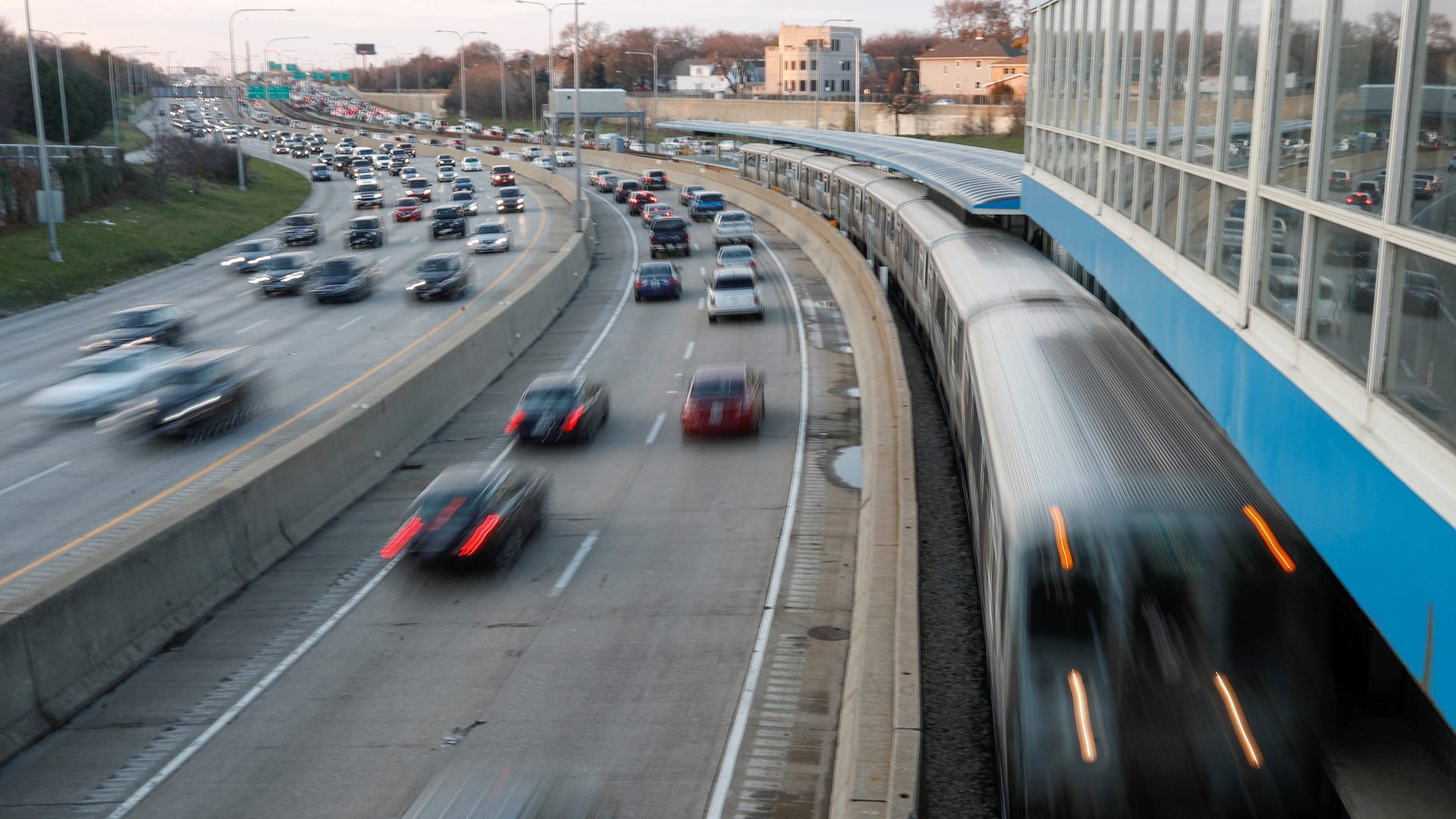No, tailgating doesn’t get you where you need to go faster
You know the feeling. You look in the rearview mirror and another vehicle is practically kissing your bumper. Not only is tailgating aggressive and dangerous, it does absolutely nothing to speed up the painful process of commuting in traffic. In fact, it does the opposite—increasing congestion at everyone’s expense, according to new research from MIT.


You know the feeling. You look in the rearview mirror and another vehicle is practically kissing your bumper. Not only is tailgating aggressive and dangerous, it does absolutely nothing to speed up the painful process of commuting in traffic. In fact, it does the opposite—increasing congestion at everyone’s expense, according to new research from MIT.
A study published on Thursday (Dec. 14) in the journal IEEE Transactions on Intelligent Transportation Systems uses mathematical simulations to show that tightly following a car in front of you will only worsen traffic jams. Instead it proposes that drivers adjust their position based on both the car in front and behind to keep traffic flow smooth. This small behavioral tweak could as much as halve commute time on certain roads.
“It might seem counter-intuitive to look backwards,” says the study’s co-author Berthold Horn, a professor in MIT’s Department of Electrical Engineering and Computer Science. “But driving like this could have a dramatic effect in reducing travel time and fuel consumption without having to build more roads or make other changes to infrastructure.”

Horn says the inspiration for his solution came out of his own frustrations from dealing with stop-and-go traffic on the highway near MIT. It occurred to him that the problem of smoothly coordinating a group of vehicles had already been solved in the natural world.
“Starlings will do this, where hundreds of them will form complicated flight patterns, and it is believed that each of them is only performing a very simple task based on its immediate neighbors,” he says. “So a simple algorithm based on just immediate neighbors can lead to very beautiful and dramatic effects.”
The algorithm that emerged from this idea dictates precisely how fast a vehicle should travel to maintain a safe midway point between its neighbors and avoid causing congestion. It accounts for variables like the speed and distance of the car ahead and behind, as well as the speed limit and legal minimum separation between cars. Horn imagines it could be used to improve current cruise control systems, which only rely on forward-facing sensors. If car companies modified their cars to also add rear ones and update their cruise control systems to account for them, traffic would improve and allow cars to travel up to two times faster.
“The full benefit [of easing congestion] will only arise when a large fraction of the cars have it implemented,” says Horn. How large a fraction wasn’t covered in the scope of his research. But fortunately, his proposed algorithm allows the car to still function alongside other cars whose systems haven’t been modified. ”This control algorithm plays well with others, so to speak, as in now you can mix cars with cruise control with cars that are ordinary human-controlled. Similarly, you can mix these cars,” Horn explains.
The algorithm may have additional benefits aside from congestion reduction, including improved passenger comfort and safety, which would manifest even before a large fraction of cars installed it and incentivize early adoption. Horn is now in the middle of investigating these benefits with the sponsorship of the Toyota Research Institute. (The study just published did not receive TRI funding.)
The control algorithm needs further refinement before practical implementation. For example, it still needs to account for edge case scenarios, such as when either the car in front or behind is missing or when the car needs to emergency break. The algorithm also hasn’t been tested with actual cars, only through computer simulation; Horn intends to obtain more funding to do so and demonstrate its effectiveness.
In the long term future, he hopes that such a control system will be mandated for all cars. “The average commuter spends 38 hours [per year] stuck in traffic, using 19 gallons of fuel and because of that, emitting 380 pounds of CO2 into the atmosphere,” he says, referencing the paper. “So there are some real benefits.”